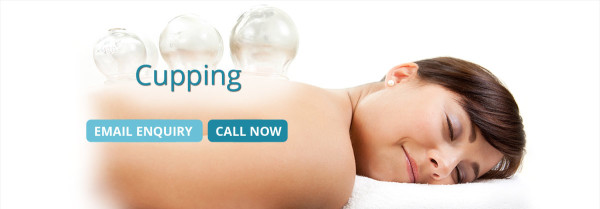
Michael Phelps, the American Olympian, was seen with perfectly round purple marks on his shoulders. He explained what they were after his 200-metre butterfly event. This is an ancient therapy called cupping that has been under the spotlight at the Olympics.
Cupping complements acupuncture in the treatment of pain & other illnesses but can be a treatment on its own. It involves vacuumed glass cups or plastic cups being placed on the body to create suction. This suction pulls the skin up, draws blood vessels & muscle tissues to the surface to break up tension and improve circulation. Where there is a lot of tension, cupping leaves a mark. The darker the mark, the more blockage (poor circulation) there is under the skin. The beauty of cupping is that it releases tension FAST, compared to, say, a relaxing massage. No wonder many American Olympians have taken up cupping since their visit to the Beijing Olympics to boost performance.
How Cupping Can Benefit You
While cupping is most often used for muscular complaints, it also serves many other areas, often in conjunction with Chinese herbs or acupuncture.
- Release tension in the back, shoulder, neck, arms, legs
- Improve circulation
- Lymphatic drainage
- Relieve stress
Does Cupping Hurt?
Cupping doesn’t have to hurt to give you benefit. But it does need to feel tight when the suction cup pulls up the skin. The tightness settles down after a couple of minutes. The cups usually stay on for about 3 to 10 minutes. When you have tension, a mark will come up very quickly. Cupping should not be done for too long or too tight. One time I received cupping from an experienced practitioner from China. She gave me the strongest cupping I had and left them on for 15 minutes. Yes, it sucked up a lot of toxins but I nearly fainted when I got up. The reason is likely that cupping diverts blood flow to the cupping area and away from other areas. Remember it doesn’t have to hurt to be effective. I only need to leave them on my patients for about a few minutes for marks to appear. Most people I see like the tight drawing sensation and love the relaxation after the cups come off.
Where Does Cupping Come From?
Cupping has been around for thousands of years. Since the 1950’s China has included it as a major player as part of traditional Chinese medicine in government hospitals. However, it is by no means an exclusive Chinese therapy. I’ve been surprised to see so many of my non Anglo-Saxon patients tell me how they know about cupping. Their families came from eastern European, African and South American countries such as Poland, Croatia, Egypt, Turkey and Chile. Hippocrates, the father of modern medicine in ancient Greece, was an advocate of cupping. It is uncertain where cupping originates from but it is definitely a well-loved folk and official treatment therapy.
Why Does Cupping Cause “Bruises”?
Real cupping marks are NOT bruises. Cupping only leaves a mark if there is a blockage in the muscle tissues under the cups. Even the strongest cupping does not leave a mark if there is no problem below the skin. Cupping performed properly does not actually bruise you. It, in fact, brings up any “bruised” or “blocked” condition to the surface to release it. If your shoulder has a lot of tension, the mark indicates the poor circulation underneath. The more the tension, the darker the mark will be. The colour of a cupping mark varies from pink, red to purple indicating the increasing degree of blockage. They can take a couple of days to two weeks to go away depending on the severity of the tension. The colour of a bruise is yellowish blue.
Cupping doesn’t always bring up a mark if the tension is too deep for the cup to get to. For example, a hip joint problem needs more than superficial cupping but requires an acupuncture needle to get to the joint. And it is very effective, too.
How Often Can I Have Cupping?
Cupping can be done everyday or as needed. Weekly cupping for several weeks is necessary for long-standing or repeated conditions. Coupled with acupuncture, the treatment time will be reduced.
Glass Cups Versus Plastic Cups
The bamboo cups used in the old days have now been replaced by glass cups and plastic cups. Glass cups involve a flame that goes into the cup to create a vacuum for suction. Plastic cups involve a manual pump that mechanically creates the vacuum instead. Most practitioners of Chinese medicine prefer to use glass cups because it has an extra warming sensation while laymen tend to use plastic cups, as they don’t catch fire.
Cupping Versus Massage
- They both release tension and promote relaxation.
- Cupping only takes a few minutes and so is best for busy people.
- Massage feels better but cupping works fast.
Tips on DIY Cupping
Like most therapies, there are precautions with cupping such as places and conditions you should avoid.
- NEVER leave the cups on for longer than 15 minutes as it can cause blisters.
- Don’t do it on an infected area.
- Don’t do it on bones.
- Don’t do it on your face. You won’t like it if it leaves a mark.
- Don’t do it on open wounds.
- Don’t do it where there is a nearby fracture.
- Don’t do it on pregnant women unless you are trained.
- Don’t use it if you bleed easily or have trouble clotting.
- Don’t do glass cupping with fire unless you know what you are doing.


